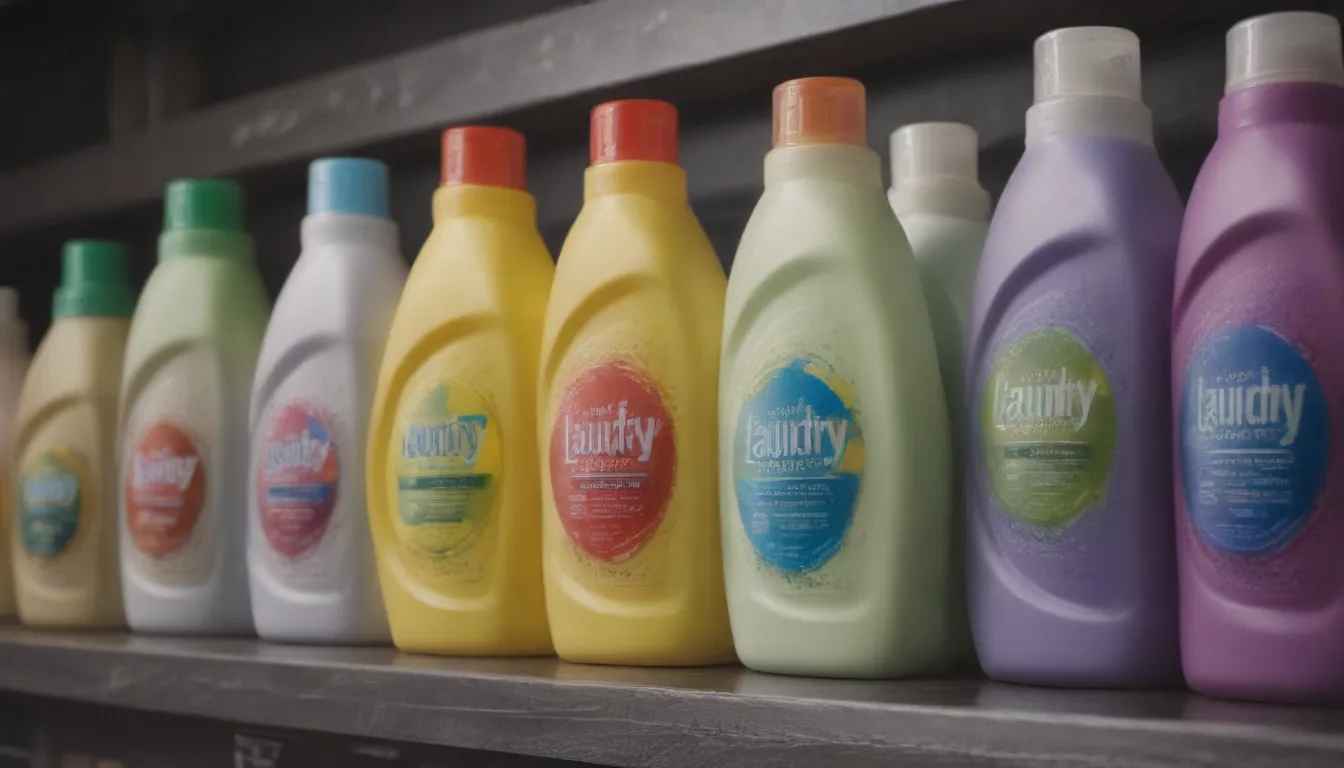Understanding Laundry Detergent Ingredients: A Comprehensive Guide

Laundry detergent has come a long way from the days of basic bar soaps made of animal fat and lye. Nowadays, there are a plethora of options to choose from, including both natural and synthetic detergents, all designed to keep your clothes looking and smelling fresh. In this article, we will explore the essential ingredients found in laundry detergents and how they work to clean your clothes effectively.
The Evolution of Laundry Detergent Ingredients
Laundry detergent ingredients have evolved over the years to include a variety of components that work together to remove dirt and stains from your clothes. Each detergent manufacturer has their own unique formula, with a combination of ingredients that determine the cleaning ability of the product. Some common basic detergent ingredients include:
Alkalies
Alkalies are soluble salts and bases found in most laundry detergents. They react with acids to neutralize them and are effective in removing dirt and stains without the need for excessive scrubbing. Common alkalies used in detergents include sodium hydroxide (NaOH) and potassium hydroxide (KOH), which are chemically produced from plants or petroleum-based sources.
Surfactants and Anti-Redepositing Agents
Surfactants are essential components in laundry detergents that work by lifting dirt and oils off the fabric and suspending them in water to be rinsed away. They prevent dirt from redepositing onto the fabric during the wash cycle. There are two main types of surfactants:
– Anionic surfactants: These have a negatively charged head and are effective at removing oily stains. Examples include alkyl sulfates and soaps.
– Non-ionic surfactants: These have no electrical charge and are suitable for use in hard water. They are often combined with anionic surfactants to enhance cleaning performance.
Functional Materials in Laundry Detergent
Catalytic Enzymes
Enzymes are natural or chemically processed components that target specific soils and break them down into smaller molecules for easy removal. The introduction of enzymes into laundry detergents has revolutionized the way we clean our clothes, allowing for lower water temperatures and less detergent usage.
Fragrance
Fragrances in laundry detergents play a significant role in the perception of cleanliness. While they do not contribute to the cleaning process, they enhance the overall experience of doing laundry.
Colorant or Dyes
Dyes are added to detergents for aesthetic purposes and have no impact on the cleaning performance. If you have sensitive skin, opt for detergent products with no dyes to prevent skin irritation.
How Laundry Detergents Work to Clean Clothes
To achieve optimal cleaning results, a combination of chemical, thermal, and mechanical energy is required when using laundry detergent. The detergent itself provides the chemical energy, while water temperature and agitation contribute thermal and mechanical energy, respectively. Here’s how these factors work together:
– Chemical energy: The ingredients in the detergent determine its cleaning power. Enzymes play a crucial role in breaking down stains, while surfactants lift dirt off the fabric.
– Thermal energy: Different detergents are formulated to work best at specific water temperatures. Choosing the right temperature setting can enhance cleaning performance.
– Mechanical energy: The physical agitation of the fabric in a washing machine or during hand-washing helps to dislodge dirt and stains from the fabric.
Choosing the Best Detergent for Your Needs
With so many options available, choosing the right laundry detergent can be overwhelming. Here are some tips to help you make the best decision for your household:
– Assess your laundry needs, including the types of stains and level of soiling on your clothes.
– Read the detergent labels to understand the ingredients used in the product. Look for surfactants and enzymes for effective cleaning.
– Consider using different detergents for lightly soiled and heavily soiled clothes to optimize cleaning performance.
– Choose a detergent formulated for the water temperature you typically use for laundry.
In conclusion, understanding the ingredients in your laundry detergent can help you make informed choices about the products you use to clean your clothes. By selecting the right detergent for your needs and following the recommended usage guidelines, you can achieve fresh, clean laundry every time. Happy washing!
Sources:
– Caustic Ingestion. Merck Manual.
– Biotech Solutions For Climate Report: Examining Biotechnology’s Contributions To Addressing The Climate Crisis. Industrial Biotechnology.
– Textile Contact Dermatitis: How Fabrics Can Induce Dermatitis. Current Treatment Options in Allergy.





